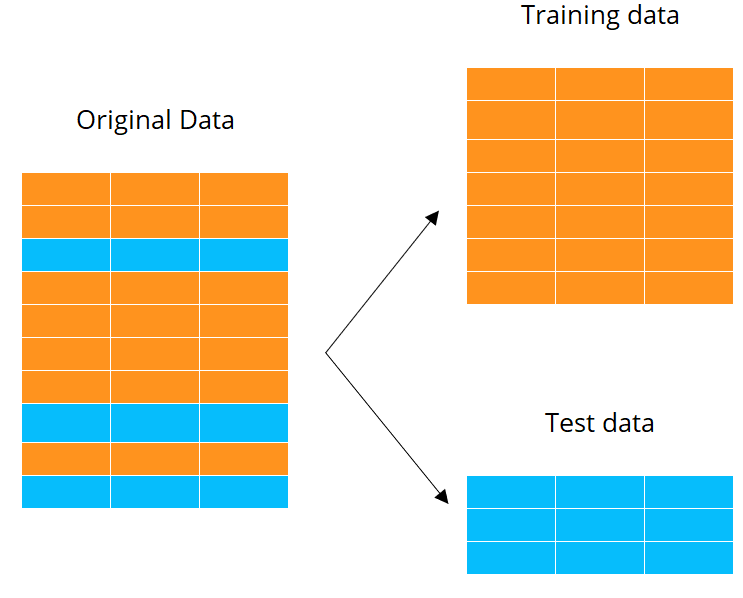Estimating performance with cross validation
Modeling with tidymodels in R

David Svancer
Data Scientist
Training and test datasets
Creating training and test datasets is the first step in the modeling process
- Guards against overfitting
- Training data is used for model fitting
- Test data is used for model evaluation
Downside
- Only one estimate of model performance
K-fold cross validation
Resampling technique for exploring model performance
- Provides K estimates of model performance during the model fitting process
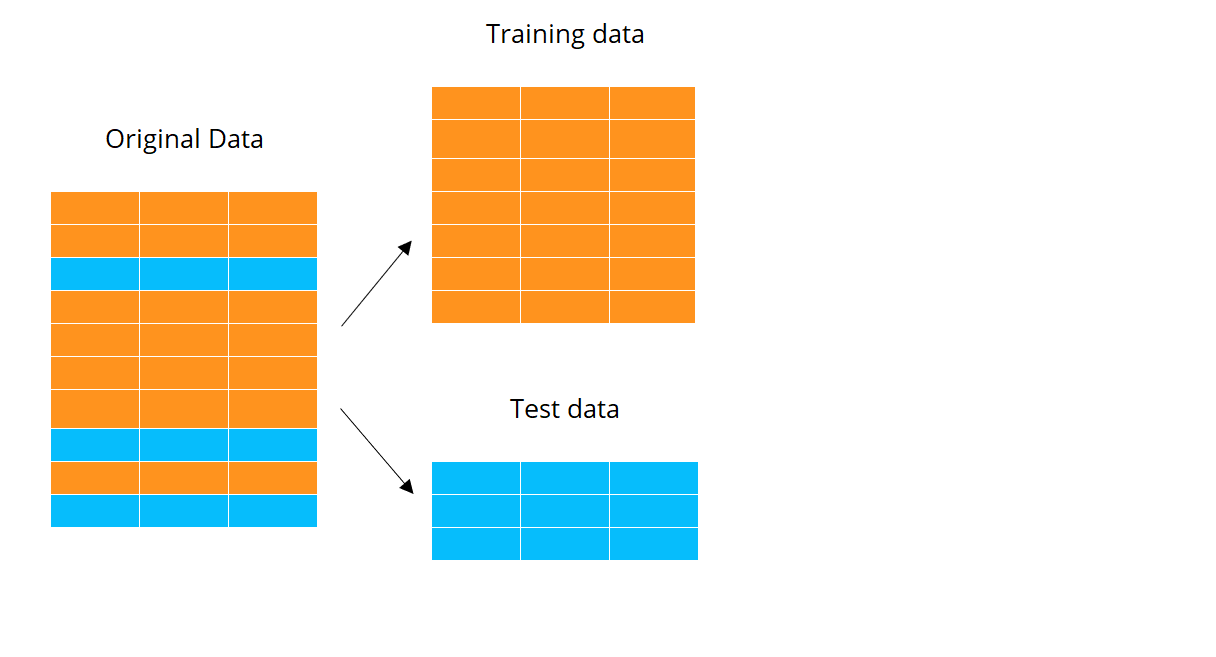
K-fold cross validation
Resampling technique for exploring model performance
- Provides K estimates of model performance during the model fitting process
- Training data is randomly partitioned into K sets of roughly equal size
- Folds are used to perform K iterations of model fitting and evaluation
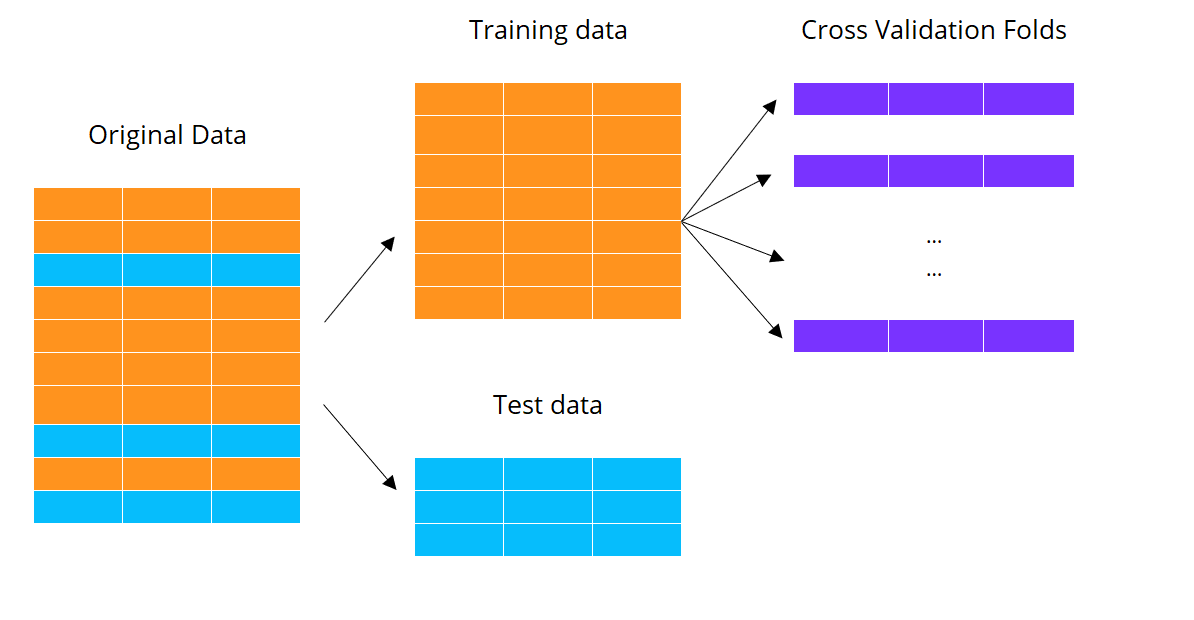
Machine learning with cross validation
Performing 5-fold cross validation
- Five iterations of model training and evaluation
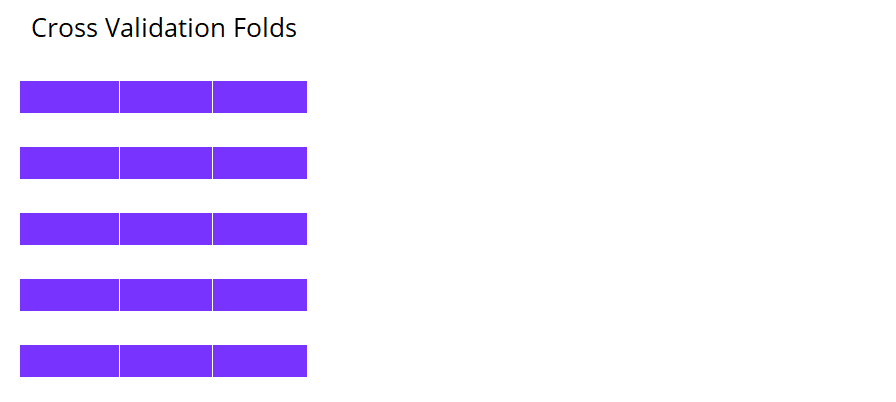
Machine learning with cross validation
Performing 5-fold cross validation
- Five iterations of model training and evaluation
- Iteration 1
- Fold 1 reserved for model evaluation and folds 2 through 5 for model training
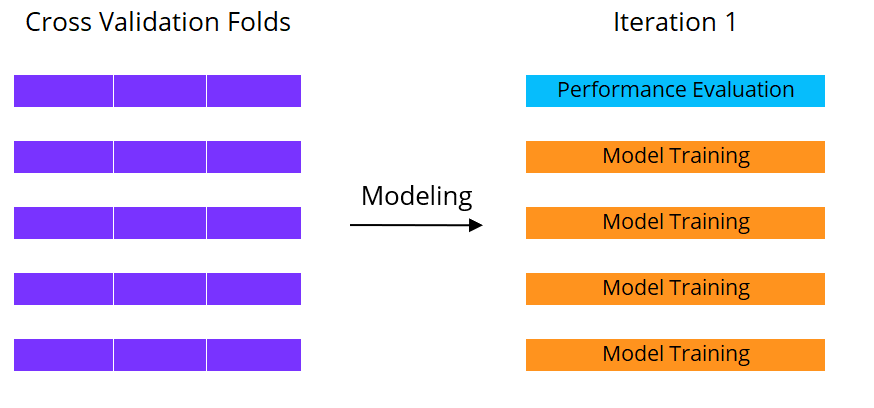
Machine learning with cross validation
Performing 5-fold cross validation
- Five iterations of model training and evaluation
- Iteration 1
- Fold 1 reserved for model evaluation and folds 2 through 5 for model training
- Iteration 2
- Fold 2 reserved for model evaluation
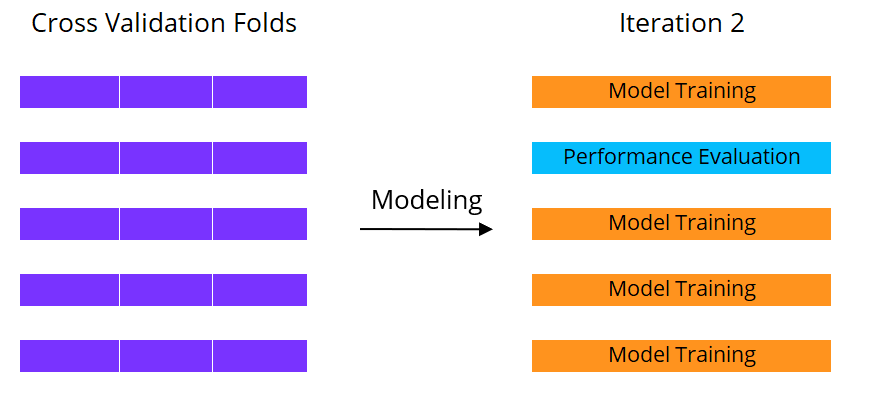
Machine learning with cross validation
Performing 5-fold cross validation
- Five iterations of model training and evaluation
- Iteration 1
- Fold 1 reserved for model evaluation and folds 2 through 5 for model training
- Iteration 2
- Fold 2 reserved for model evaluation
Five estimates of model performance in total
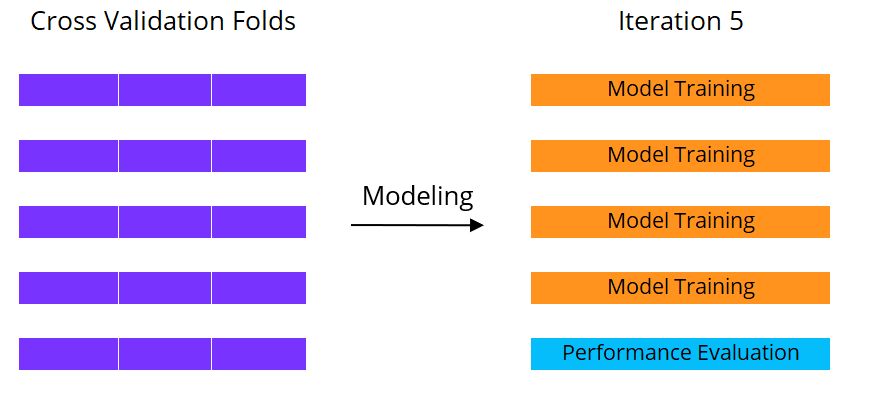
Creating cross validation folds
The vfold_cv() function
- Training data
- Number of folds,
v - Stratification variable,
strata - Execute
set.seed()beforevfold_cv()for reproducibility splits- List column with data split objects for creating fold
set.seed(214) leads_folds <- vfold_cv(leads_training,v = 10,strata = purchased)leads_folds
# 10-fold cross-validation using stratification
# A tibble: 10 x 2
splits id
<list> <chr>
1 <split [896/100]> Fold01
2 <split [896/100]> Fold02
3 <split [896/100]> Fold03
. ................ ......
9 <split [897/99]> Fold09
10 <split [897/99]> Fold10
Model training with cross validation
The fit_resamples() function
- Train a
parsnipmodel orworkflowobject - Provide cross validation folds,
resamples - Optional custom metric function,
metrics- Default is accuracy and ROC AUC
Each metric is estimated 10 times
- One estimate per fold
- Average value in
meancolumn
leads_rs_fit <- leads_wkfl %>%fit_resamples(resamples = leads_folds,metrics = leads_metrics)leads_rs_fit %>% collect_metrics()
# A tibble: 3 x 5
.metric .estimator mean n std_err
<chr> <chr> <dbl> <int> <dbl>
1 roc_auc binary 0.823 10 0.0147
2 sens binary 0.786 10 0.0203
3 spec binary 0.855 10 0.0159
Detailed cross validation results
The collect_metrics() function
- Passing
summarize = FALSEwill provide all metric estimates for every cross validation fold - 30 total combinations (3 metrics x 10 folds)
.metriccolumn identifies metric.estimatecolumn gives estimated value for each fold
rs_metrics <- leads_rs_fit %>% collect_metrics(summarize = FALSE)rs_metrics
# A tibble: 30 x 4
id .metric .estimator .estimate
<chr> <chr> <chr> <dbl>
1 Fold01 sens binary 0.861
2 Fold01 spec binary 0.891
3 Fold01 roc_auc binary 0.885
4 Fold02 sens binary 0.778
5 Fold02 spec binary 0.969
6 Fold02 roc_auc binary 0.885
# ... with 24 more rows
Summarizing cross validation results
The collect_metrics() function returns a tibble
- Results can be summarized with
dplyr- Start with
rs_metrics - Form groups by
.metricvalues - Calculate summary statistics with
summarize()
- Start with
rs_metrics %>%group_by(.metric) %>%summarize(min = min(.estimate), median = median(.estimate), max = max(.estimate), mean = mean(.estimate), sd = sd(.estimate))
# A tibble: 3 x 6
.metric min median max mean sd
<chr> <dbl> <dbl> <dbl> <dbl> <dbl>
1 roc_auc 0.758 0.806 0.885 0.823 0.0466
2 sens 0.667 0.792 0.861 0.786 0.0642
3 spec 0.810 0.843 0.969 0.855 0.0502
Cross validation methodology
Models trained with fit_resamples() are not able to provide predictions on new data sources
predict()function does not accept resample objects
Purpose of fit_resample()
- Explore and compare the performance profile of different model types
- Select best performing model type and focus on model fitting efforts
predict(leads_rs_fit,
new_data = leads_test)
Error in UseMethod("predict") :
no applicable method for 'predict' applied to
an object of class
"c('resample_results',
'tune_results',
'tbl_df',
'tbl', 'data.frame')"
Let's cross validate!
Modeling with tidymodels in R
